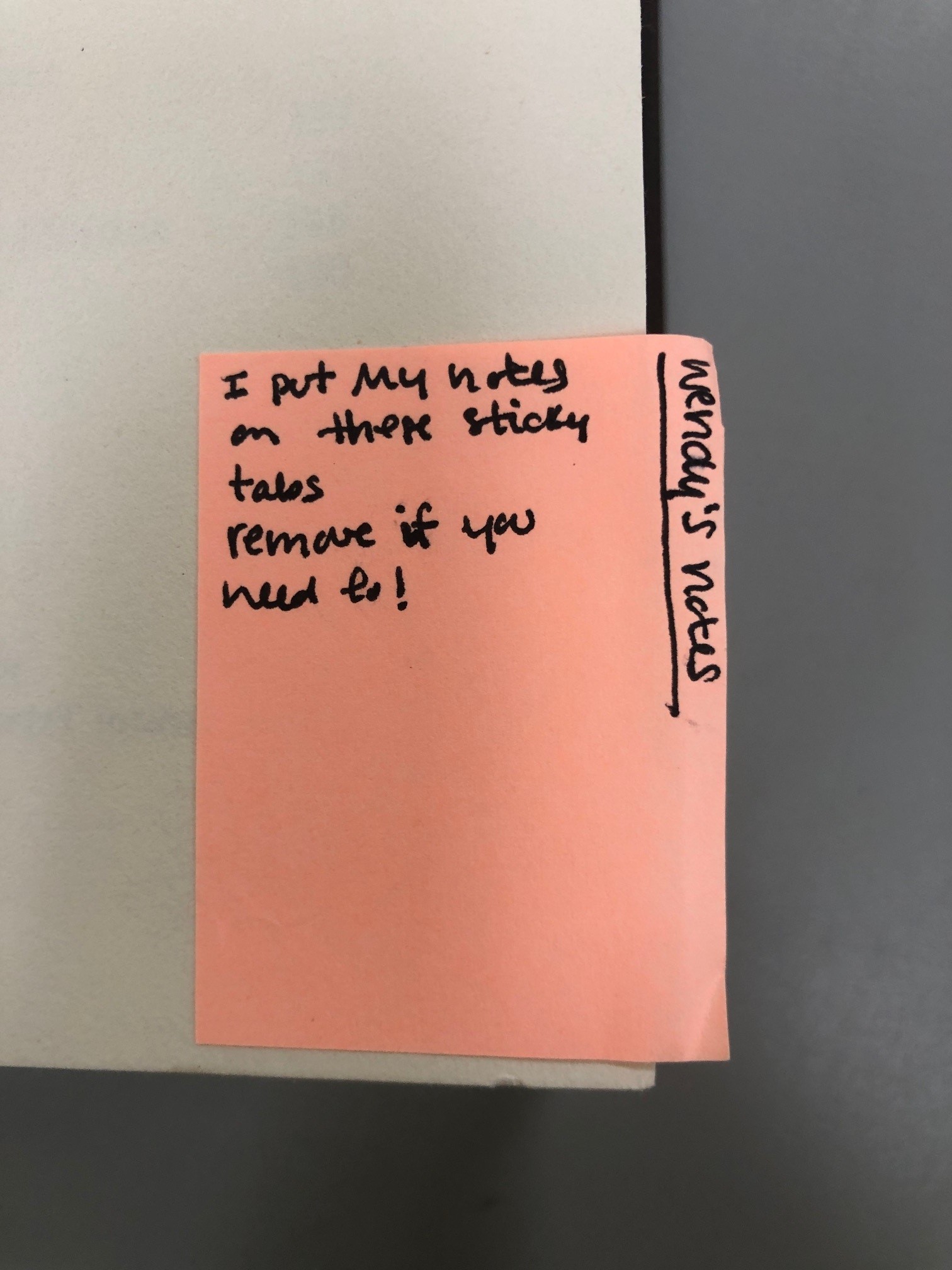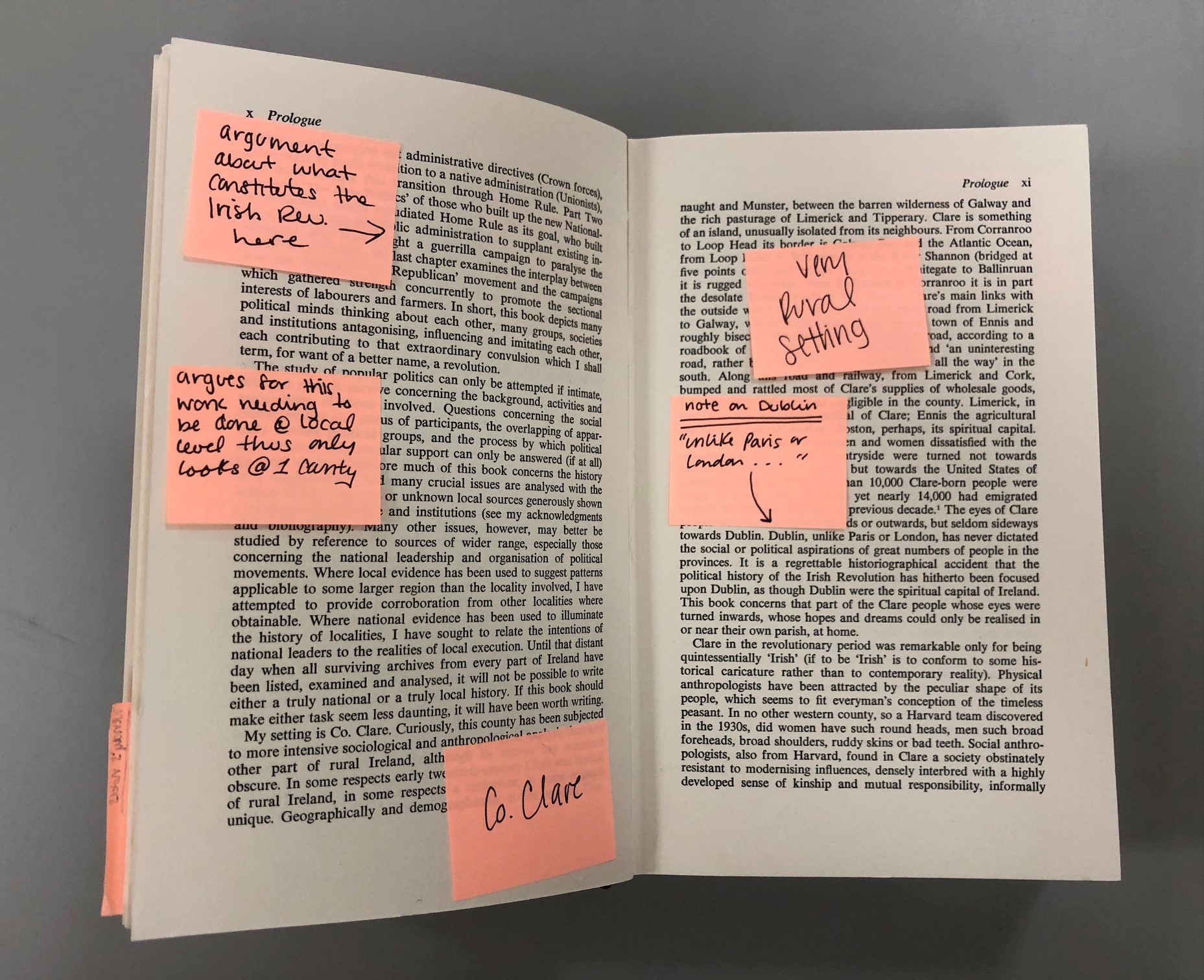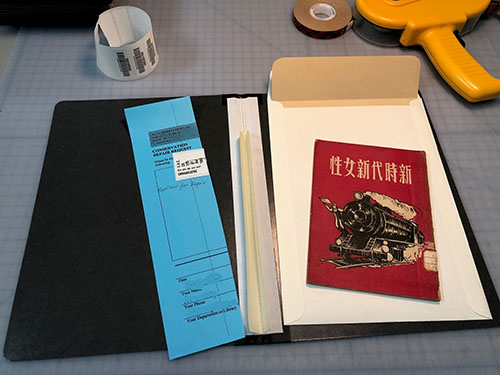
Quick Pic: Current Mood


General Collections conservation is like a box of chocolates, you never know what you are going to get from Circulation. Lucky for us, this gentle reader only got through a couple chapters, not the whole text. We’ll take this over highlighting or underlining any day.



It’s raining pams in the lab today. Hallelujah!

Check out this awesome cover art. These are all fairly brittle, so we are putting them in envelope-binders.

I think there are about a hundred plus some larger publications that will need four-flap boxes.

I love the before and after of putting brittle things in pamphlet binders. It’s very satisfying. It’s time for a pamphlet dance party.
We just love this illustration of a Dacian warrior and his horse in armor from Thomas Hope’s Costumes of the Greeks and Romans (1962 edition).
At first glance, though, it kind of looks like they were wearing matching crocheted outfits. I don’t know that such a thing has been done before, but based on the number of images I can find of crocheted chainmail and horses in sweaters, it seems entirely possible.
Monday Me: I’ll finish work on this damaged book exhibit tomorrow.
Tuesday Me walking into the office: What in the heck….oh….wait…


Sometimes a message comes in a bottle, sometimes it comes on a 3×5 card stuck inside a book.
I was in the Rubenstein Library the other day, reviewing the condition of some of the bound Ethiopic manuscripts for a research request, when I noticed something interesting going on at the fore-edge of one book.
It turns out that small lengths of colored thread have been sewn through the fore-edge of specific leaves to mark beginning passages of text.
 I often see other examples of textblock “wayfinding” through the use of notched pages (otherwise known as a “thumb index”), leather index tabs, or even library patrons affixing their own post-it notes in circulating books – but I was, until now, unfamiliar with the fore-edge tassel. For books with parchment leaves, this seems like a very durable and effective page marking method. They certainly add a little more festive cheer than the typical brown leather tab.
I often see other examples of textblock “wayfinding” through the use of notched pages (otherwise known as a “thumb index”), leather index tabs, or even library patrons affixing their own post-it notes in circulating books – but I was, until now, unfamiliar with the fore-edge tassel. For books with parchment leaves, this seems like a very durable and effective page marking method. They certainly add a little more festive cheer than the typical brown leather tab.
We’ve written before about book publishers’ novel and sometimes misguided attempts at including additional media in bindings (see Robots 1:1). Many new acquisitions to the circulating collection include supplementary images, audio, or video on CD, and they often come to Conservation Services for a pocket that can be physically attached to the book to keep all the parts together.
 Night Falls on the Berlin of the Roaring Twenties (2018) is a wonderful graphic exploration of the cultural and technological “golden age” of the Weimar-era, immediately proceeding the rise of National Socialism. Illustrations by Robert Nippoldt, accompanied by texts from Boris Pofalla (translated by Ida Hattemer-Higgins), profile prominent individuals and places in the city.
Night Falls on the Berlin of the Roaring Twenties (2018) is a wonderful graphic exploration of the cultural and technological “golden age” of the Weimar-era, immediately proceeding the rise of National Socialism. Illustrations by Robert Nippoldt, accompanied by texts from Boris Pofalla (translated by Ida Hattemer-Higgins), profile prominent individuals and places in the city.
 To complete the experience, an audio CD of music from that period is included inside the rear board – and here is where the book design really shines.
To complete the experience, an audio CD of music from that period is included inside the rear board – and here is where the book design really shines.
 The rear paste-down features a print of a “cathedral style” table-top radio. The CD is printed to match the design of the radio and mounts to round plastic knob, rather than being stored in a plastic case or paper pocket. The audio track list is printed on the adjoining flyleaf as if it were coming from the radio.
The rear paste-down features a print of a “cathedral style” table-top radio. The CD is printed to match the design of the radio and mounts to round plastic knob, rather than being stored in a plastic case or paper pocket. The audio track list is printed on the adjoining flyleaf as if it were coming from the radio.
But the best part is when you remove the CD to reveal the vacuum tubes and other internal components of the radio! We like to complain about modern structures and design in book publishing, but in this case they really got it right.